Homeacres 28th February, mulched and weed-free beds of 1.2 m / 4 ft mostly, and paths of 40 cm / 16 in.
Beds are ready for spring plantings, but the weather is not!
Windowsill germination of turnips, kohlrabi, radish, spinach, fennel and spring onion.
House warmth results in more even germination compared to a greenhouse, where cold nights slow it down, or even prevent it. Unless you have a heat mat, worthwhile at this time.
Once germination has happened with leaves visible, the trays need full light, as in greenhouse, polytunnel, cold frame.
If you do not have a structure outside, plants on windowsills need artificial light. Some tell me it works fine with a simple neon tube!
Above, a few days afterwards in the greenhouse 28th February.
We are starting a run of cold nights, and even inside this structure the temperature was just below freezing last night, compared to -3°C, 27°F outside.
I laid fleece over the seedlings on this bench yesterday evening and remove it by day. They are cold-hardy vegetables, but will thrive more if not freezing every night.
Sowings you can make now - in a waxing moon is good!
Under cover, if not sown already, sow any of broad beans, peas for shoots and pods, lettuce, onions, salad onions, cabbage, calabrese / broccoli, kohlrabi, cauliflower, beetroot, celery. Plus herbs such as dill, coriander, parsley.
Perennials to sow now are globe artichoke, asparagus, sorrel, and thyme.
Two vegetables I do not sow yet are leeks, unless you want summer leeks, and chard. For chard, and to some extent leeks, early sowings can bolt by summer.
On the other hand, sow spinach, turnips, Florence fennel and kohlrabi as soon as possible. This gives them time to make a harvest. before their summer flowering.
My Growing Guides give extensive details of each vegetable.
If you don't yet have seeds and live in the UK, you can buy my monthly collections from Premier Seeds Direct.
March has the largest number of seed packets.
I've had feedback that the plastic packets are not nice to reseal, and the company are looking at paper-based alternatives of larger packets.
The small packets contain impressive quantities of seeds, and germination is strong.
Warmth lovers (photo is 21st March 2023)
With full moon on 14th March, I shall sow tomatoes on 11th or 12th. That will give plants a strong energy during their life*. They are for growing under cover.
Depending how many seeds I have, often I drop two in a shallow indent in the compost of each module cell. That gives the result you see above, in the middle.
Two weeks after that, I pop those seedlings into 7 cm pots. If we need extra plants, the ones with two seedlings can be separated into two pots.
For outdoor tomatoes, sow towards the end of March as they can't go outside until 10th–15th May, depending on your last frost date.
Wait until mid-April to sow cucumbers, and 20th–25th April before sowing courgettes, sweetcorn etc.
*As verified by the Koliskos in Prague, 1925-35. I explain that and more in a new booklet I'm publishing mid - April, Energy Gardening.
Another hotbed photo is on the March page of my 2025 Calendar.
With some new plywood, and fresh horse manure in larger quantity, the hotbed is higher than normal. I'm hoping this will mean less need to top it up through March, as the level sinks from composting.
The temperature currently is 56°C / 130°F in the middle. That makes a nice gentle warmth at the surface, for module trays on a pallet frame, as in the photo.
For the first week only, I've covered the surface, under the frame, with a plastic sheet. That's to reduce ammonia gases which risk singeing seedling leaves.
Planting after bed and path prep
Mostly you will not be setting plants outside yet, perhaps some multisown radish and turnips with a fleece cover.
See my Garden Planner for working out where and when to plant, and with which spacings.
We have transplanted wild rocket, sown last September.
It's hardy, and seedlings grow strongly from sowing in module trays, then popping into 7 cm pots in my unheated greenhouse.
The surface is home-made compost spread in January at six months age. That was after clearing chard. This compost had been softened by frosts, then we raked it lightly, which will have disturbed any weed seeds.
The paths have just a centimetre / half inch of new woodchip, on older chips. The wood is not about smothering weeds, because they there are not any.
It's about feeding mycelia and other organisms in the path soil, which is easier to hand weed when a surface mulch of organic matter maintains a softer surface.
This bed now has a mesh cover on hoops, to protect against flea beetle, insects, mainly, and rabbits possibly.
You can buy covers made from plant material on my Crocus page.
Harvest period should be April to July. During that period I do not crop salad rocket, which rises to flower in the spring.
WEEDS AND WEEDING
This short video has advice about staying ahead of weed growth. From their seeds germinating, or new growth from existing roots.
When you deal with weeds at a small stage, it's far easier to keep beds and paths weed free, as you see at Homeacres. We spend very little time on weeding, to keep this half acre clean.
Some find this challenging because they say weeds have a place. I agree with that, and their place is in edges and perimeters around, not amongst the vegetables.
Partly it's a question of time, how much time do you have? Weeds by definition grow strongly, then drop hundreds of seeds or spread rapidly in a short time. In practical terms, it's considerably easier to tackle them before they are large and numerous.
In the photo are weeds from Nicola's garden. Most of them are not growing here.
Another way to reduce weeds
Sometimes I lay reusable black plastic for a few months, as in this video. Under the plastic in the photo of 18th May 2024, is 7 cm compost applied in February.
Also under the plastic is what you see in the background, a lot of creeping buttercup. I know from experience how difficult this weed can be, if the mulching is not thorough, or for too short a period.
However the result of covering like this, and it's not too late to start now, is 100% weed elimination*. This saves so much time for years to come. Plus while the weeds die, you enjoy a fantastic harvest of squash, while potatoes work well too.
*For bindweed, marestail and ground elder, eight months under plastic does not kill them. Follow-up is removal of regrowth every week in summer months, using a trowel.
This continues weakening the deeper roots, until they give up.
This is a free event, online with six amazing presenters to explain the projects and methods. Sign up here.
Last year's webinar triggered our monthly Future Gardeners newsletter, for those interested in gardening with children.
The newsletter sign up is on my website homepage.
NEWS
It was a pleasure to record a podcast with Sarah Raven, to be aired on 27th March. We have known each other for decades, through my friendship with Penny Hobhouse, her aunt.
My booklet on energy gardening appears in the middle of April. We shall be giving tasters of its contents over the coming weeks. I'm excited to share ideas and methods which I've been using both for a long time, and more recently.
See my Energy Gardening courses here.
A live interview with the channel host Enoch Graham, on Saturday evening 1st March, or 10am PST.
UPCOMING EVENTS, details here
My trip to Denmark, 11th to 14th April is creating much interest and I'm really looking forward to it. I'm sorry that a few events are sold out.
On 23rd to 24th April, is a course here on dowsing and land-energy work by Alanna Moore from Australia, the world's top expert on this subject.
Close to home is a compost making event at Langford Farm near Bristol on 3rd May.
In the Netherlands in May there are two course dates on Saturday 10th and Sunday 11th. Both have no dig + vegetable growing practice and theory.
Homeacres first 2025 open day, with other gardens of the village, is Sunday 8th June. The second is Saturday 6th September.
In mid-June is an international homesteading tour of S England, with one day here.
See the events page for more dates and details.
This page has dates for courses here and the first two with places available are 9th, and 16th April.
Before deleafing overwintered spring cabbage.
It's a method / principle, you can use for many vegetables, and is well known for tomatoes. See this video we made in summer 2022
After deleafing. It reduces slug presence and increases beauty. Plus it's a chance to pull a few weeds and interact with the vegetables, which they enjoy.
Trial beds
This is the bed I dig every December, with compost incorporated. That means soil is on top and the soil here is quite silty.
It has a tendency to cap in heavy rain and that's what you see here, the small puddle after 12 mm rain in three hours.
It's surface damage more than anything but not a sign of stable soil structure.
I took this photo at the same time on the adjacent, no dig bed.
It has the same amount of compost, but on the surface.
You can see how open the surface is, with no damage from rain.
Its soil has 18% carbon, compared to 14% in the dug soil, from the same amounts of compost added since 2012.
Forcing rhubarb is an option. I leave three years between forcing the same plant, because it weakens their growth. They are Timperley Early on 24th February.
The large pond is almost full after 37mm / 1.5 in rain in two days.
It's going down again slowly, and that is fine, providing different ranges of habitat.



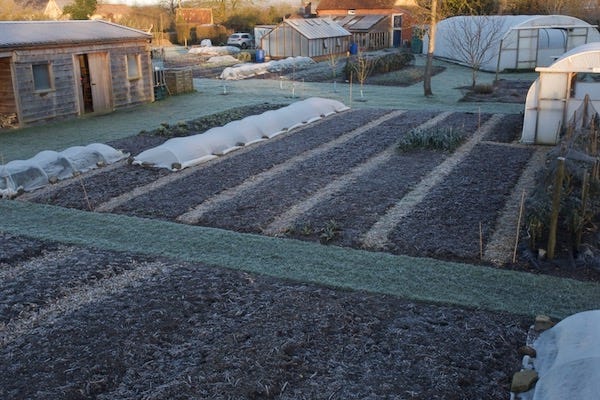
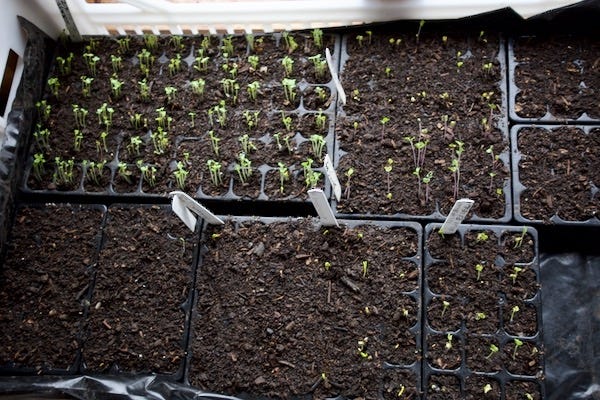
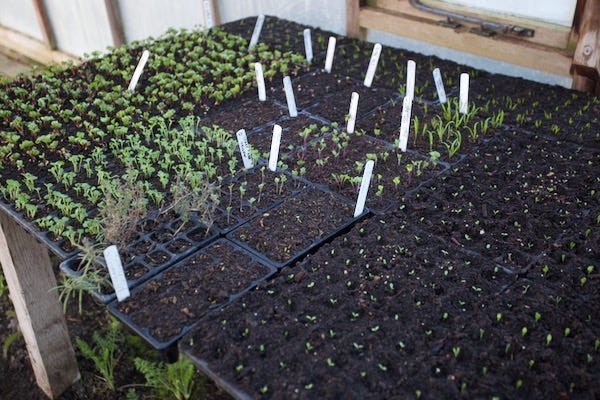

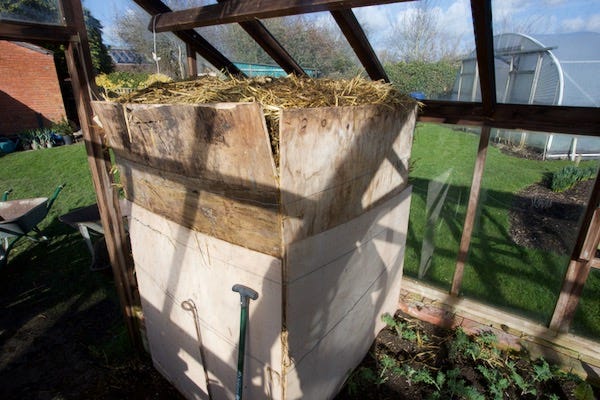

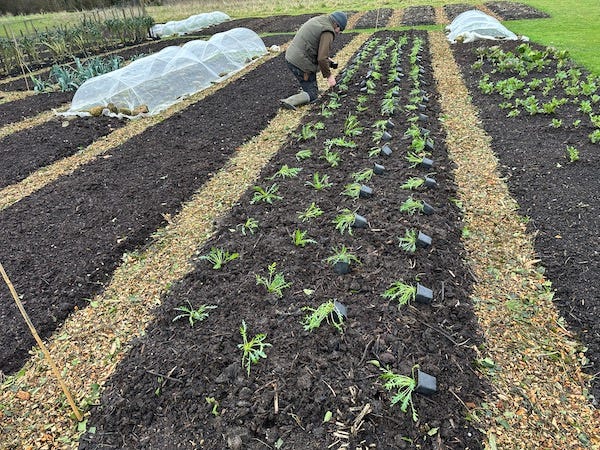
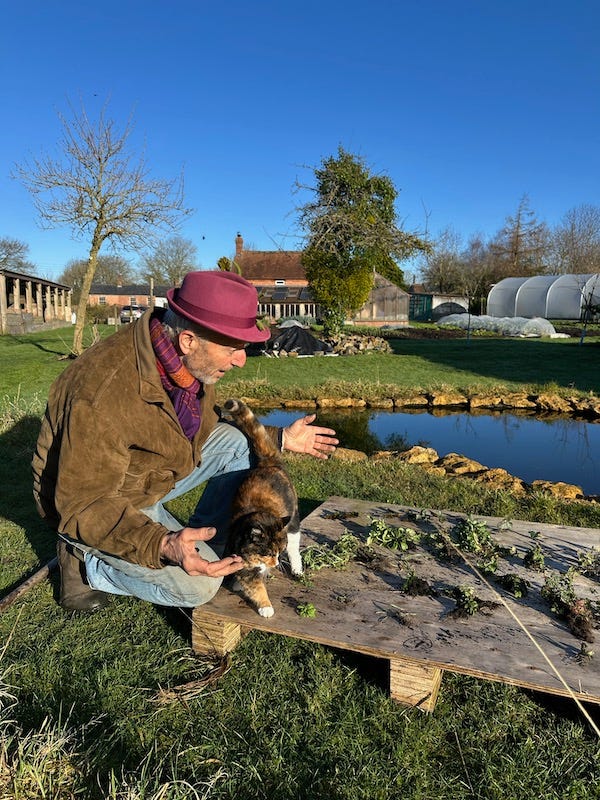
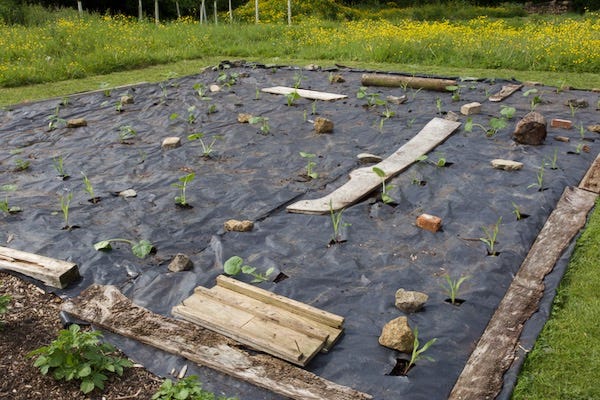

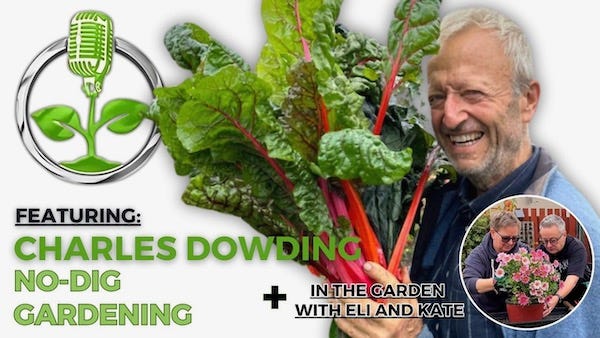

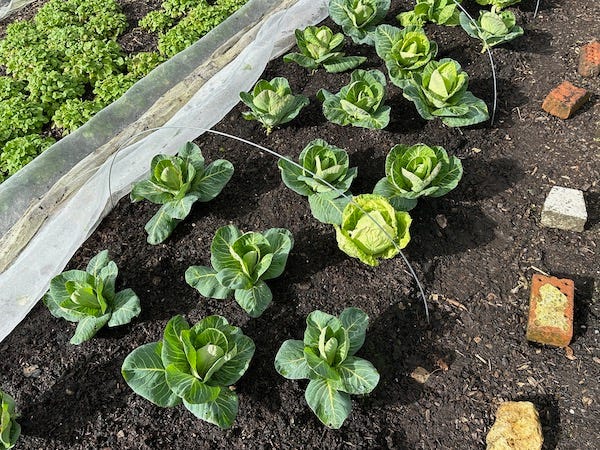
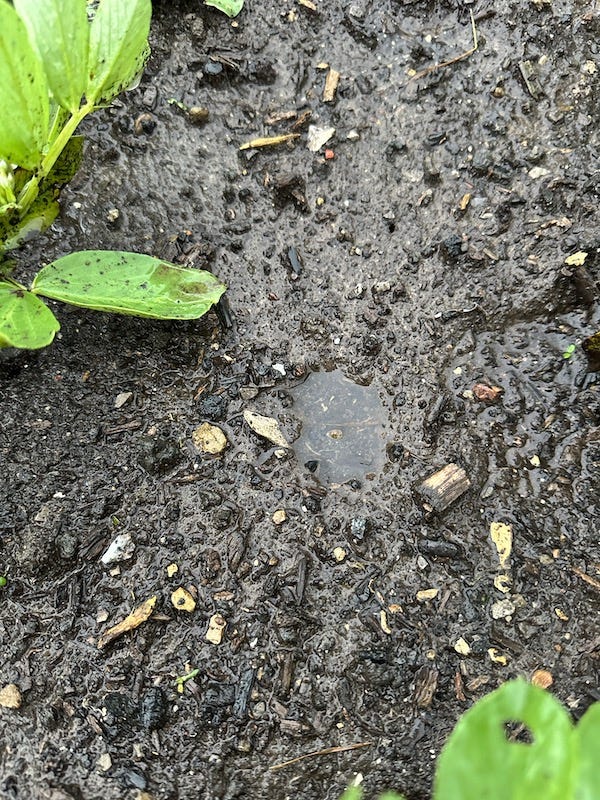
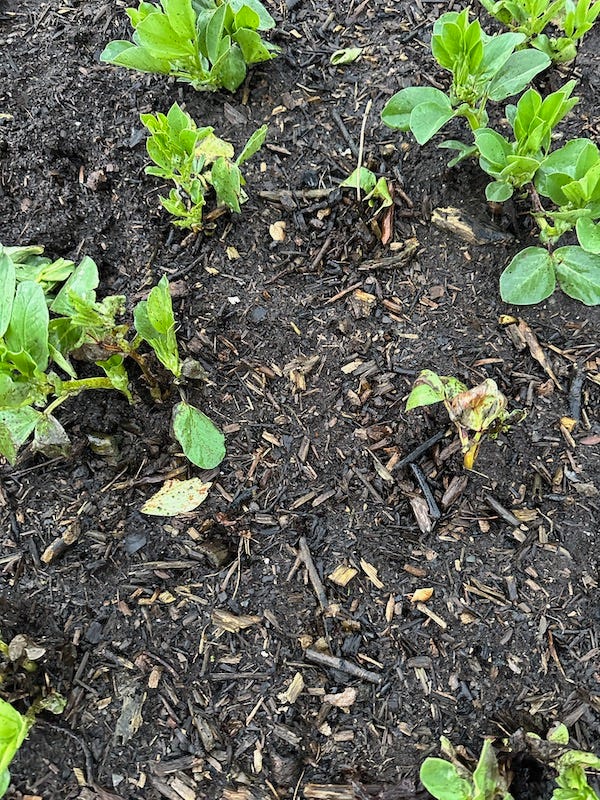

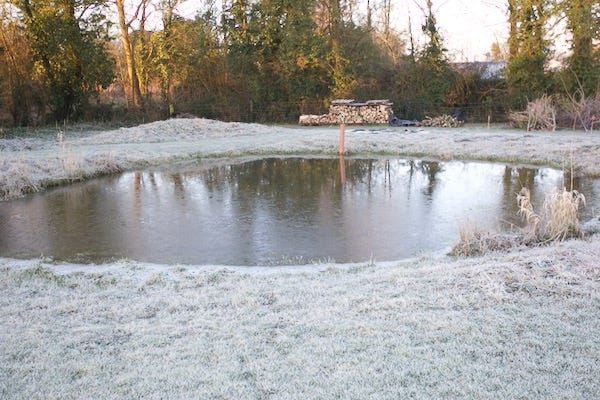

I really liked this!!
I always find it interesting that you’re putting off starting your tomatoes until the 11th or 12th to take advantage of the moon cycle, I needed an excuse to push back my start dates for the indeterminates and that sounds just right to me.
I published an article yesterday based on my experiences with Grow Lights - in short it’s true that the old style fluorescent tubes a few inches above seedlings can keep them going, but there are limitations - I cover a lot of ground in that article. Hope you have time to check it out :)
https://open.substack.com/pub/catsandcrops/p/the-practicalities-of-using-grow?r=37jqh0&utm_campaign=post&utm_medium=web